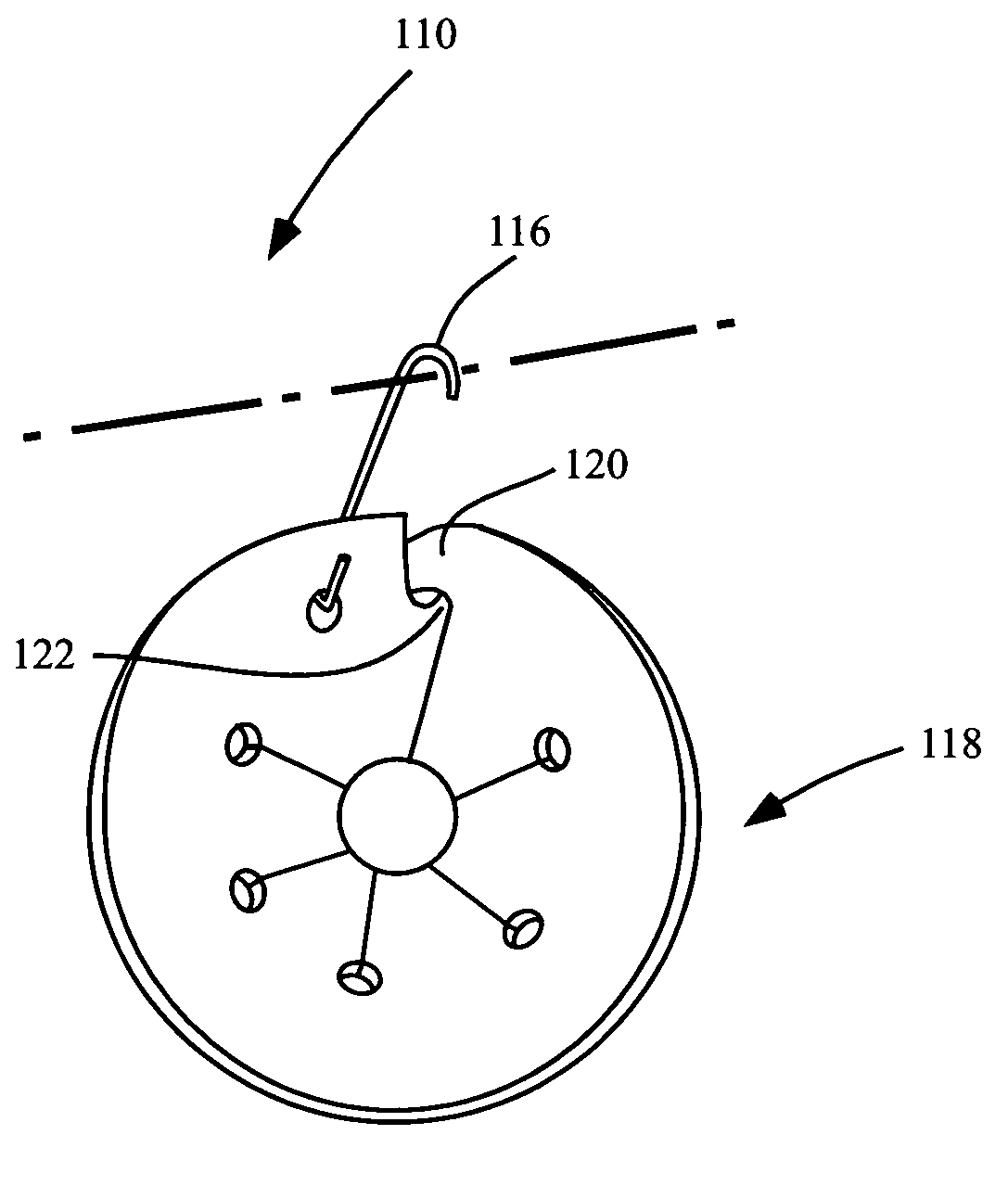Vegetation attachment device
a technology of attachment device and plant limb, which is applied in the direction of flexible container closure, machine support, and appliance, etc., can solve the problems of complicated pruning or trimming of vines, high labor intensity, and harmful use of tying devices
- Summary
- Abstract
- Description
- Claims
- Application Information
AI Technical Summary
Benefits of technology
Problems solved by technology
Method used
Image
Examples
embodiment 10
[0015]The device further comprises biasing means which apply tension to the closing hook 20 to maintain the engagement of the closing hook to the catch member 22. For the embodiments shown in FIGS. 1 through 9, the biasing means is generally provided by the material itself, that is the material is flexible and must be compressed to engage the closing hook 20 to the catch member 22. The material used to manufacture this embodiment 10, and the other embodiments shown in FIGS. 1 through 9, must be sufficiently flexible and elastic to maintain the device in a closed position when the closing hook 20 engages the catch member 22. That is, the biasing means for maintaining the engagement of closing hook 20 to catch member 22 is integral to the body member 18. In addition to being flexible and elastic, the material should have weather resistant properties. Such materials may include, but are not limited to, plastic, metal foil, or tar paper. While the embodiments shown in FIGS. 1 through 9 ...
embodiment 610
[0024]As with the embodiments described above, this embodiment 610 comprises biasing means for maintaining the engagement of the closing hook 620 to the catch member. However, in the case of embodiment 610, the biasing means is provided integrally by the mechanical properties of wire body member 618, and the shape into which the wire body member is configured. Assuming suitable mechanical properties of wire body member 618, if the wire body member is configured such that the closing hook 620 is spaced apart from the catch member, such as in the configuration shown in FIG. 11, compression of the device such that closing hook engages either attachment 616 or attachment hook extension 621 will impose a spring load which will maintain the device in a closed position.
[0025]As shown in FIGS. 10 and 11, the wire body member 618 of this embodiment is configured to form a plurality of loop sections 630. Each loop section 630 has a throat having a variable width L, as depicted in FIG. 11. As ...
PUM
 Login to View More
Login to View More Abstract
Description
Claims
Application Information
 Login to View More
Login to View More - R&D
- Intellectual Property
- Life Sciences
- Materials
- Tech Scout
- Unparalleled Data Quality
- Higher Quality Content
- 60% Fewer Hallucinations
Browse by: Latest US Patents, China's latest patents, Technical Efficacy Thesaurus, Application Domain, Technology Topic, Popular Technical Reports.
© 2025 PatSnap. All rights reserved.Legal|Privacy policy|Modern Slavery Act Transparency Statement|Sitemap|About US| Contact US: help@patsnap.com



